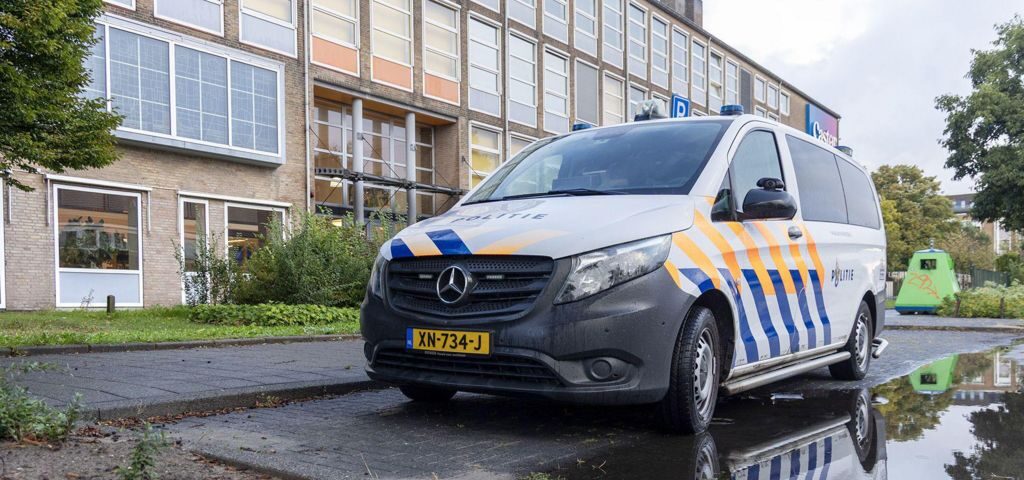In the shadow of war, every day in eastern Ukraine feels like a gamble between life and loss. The Russian army’s slow but relentless advance has forced millions of Ukrainians to face an agonizing choice: stay in their homes, clinging to memories and roots, or flee to uncertain safety. I’ve spoken with friends who’ve faced similar dilemmas, their voices heavy with the weight of leaving everything behind. This article dives into the heart of this crisis, exploring the human stories, practical realities, and resources available for Ukrainians making this life-altering decision in 2025, as the front lines creep closer.
The War’s Relentless Advance
Russia’s invasion, now in its fourth year, has reshaped Ukraine’s landscape and lives. As of September 2025, Russian forces control about 20% of the country, with recent gains in Donetsk and other eastern regions. The slow grind of their summer offensive, coupled with drone and missile strikes, has pushed civilians to the brink, forcing them to weigh staying against fleeing.
A Shifting Front Line
The front line, once a distant rumor for many, now looms just miles from towns like Bilozerske and Pokrovsk. Russian troops, bolstered by North Korean forces, have advanced 10 km in some areas, threatening key supply routes. Civilians face daily shelling and drone attacks, making staying a perilous choice.
Why the Advance Matters
Each kilometer gained by Russia disrupts lives, cuts off resources, and heightens fear. Towns like Chasiv Yar, reduced to rubble, show the cost of occupation. Losing strategic hubs like Pokrovsk could split Ukraine’s eastern defenses, making evacuation even more urgent.
The Human Cost of Staying
For many Ukrainians, staying is about more than stubbornness—it’s about identity, family, and history. Take Nadiia and Oleh Moroz, who remain in Slovyansk despite nightly drone attacks. Their son, Serhii, killed in 2022, rests in a hillside grave they visit often, unable to imagine abandoning him.
Emotional Ties to Home
Leaving means severing ties to loved ones, living or lost. Nadiia’s tearful words at her son’s grave—“How can you lose the place where you were born?”—echo the sentiment of many. For them, staying is a way to honor memories, even as artillery lands nearby.
Risks of Staying
Staying near the front line means living under constant threat. Drone strikes, like the one that killed 20 civilians in Yarova in September 2025, are a grim reminder of the danger. Russian tactics, including glide bombs and human wave attacks, make civilian areas targets.
The Pain of Fleeing
Fleeing offers safety but comes with its own heartbreak. Olha Zaiets and her husband Oleksander fled Oleksandrivka after a missile strike destroyed their neighbor’s home. Now in a borrowed house in Sviatohirsk, they face an uncertain future, their belongings still unpacked.
Challenges of Evacuation
Evacuation is no simple task. Drone strikes hinder rescue efforts, and many, like those in Pokrovsk, must travel 60 miles by bus to safety. The emotional toll of leaving everything behind—homes, jobs, communities—is immense, often compounded by financial strain.
Stories of Displacement
Over 8 million Ukrainians have fled abroad since 2022, with another 8 million displaced internally. Families like Olha’s struggle to find permanent homes, often relying on temporary shelters or borrowed spaces. The loss of community and stability weighs heavily.
Factors Influencing the Decision
Deciding to stay or go involves weighing practical, emotional, and safety factors. Each choice carries risks and rewards, shaped by personal circumstances and the war’s unpredictable course.
Safety Concerns
The proximity of Russian forces is a major driver. In Bilozerske, just 9 miles from the front, daily drone attacks and shelling make staying increasingly untenable. Yet, some hold out, hoping for a Ukrainian counteroffensive.
Emotional and Cultural Ties
Roots run deep in Ukraine’s east, where Russian-speaking communities often feel a complex connection to both nations. For many, leaving feels like betraying their heritage or abandoning loved ones’ graves, as seen with Nadiia and Oleh.
Economic and Practical Barriers
Fleeing requires resources—money, transportation, a destination. Many lack the means to relocate, especially older residents or those with health issues, like Olha, recovering from cancer surgery. Temporary shelters often lack basic amenities.
Comparison: Staying vs. Fleeing
| Choice | Pros | Cons |
|---|---|---|
| Staying | Preserves connection to home, community, and memories; avoids displacement trauma | High risk of injury or death from shelling/drones; limited access to resources |
| Fleeing | Increased safety; access to aid in safer regions or abroad | Loss of home, community; financial and emotional strain; uncertainty |
Both choices are fraught with challenges, but safety often tips the scale as the front line nears.
Support Systems for Evacuation
For those choosing to flee, resources exist to ease the transition, though access can be spotty. Organizations and government programs offer aid, transportation, and shelter, but the war’s intensity complicates delivery.
Government and NGO Support
- White Angels: Police units like the White Angels in Bilozerske evacuate civilians under drone fire, using armored vans with anti-drone cages.
- UNHCR: The UN’s refugee agency provides cash assistance, shelter, and legal aid for displaced Ukrainians. Visit UNHCR Ukraine for details.
- Red Cross: Offers emergency supplies and medical support in conflict zones. Check Red Cross Ukraine for local services.
These groups prioritize high-risk areas, but drone attacks and damaged infrastructure slow efforts.
International Aid
Countries like Poland and Romania host millions of Ukrainian refugees, offering temporary housing and job programs. The EU’s Temporary Protection Directive provides legal status and work rights until March 2026. Learn more at EU4UA.
Local Community Efforts
Grassroots groups, like volunteers in Sviatohirsk, provide food and shelter to displaced families. Social media platforms like Telegram (e.g., @UkraineAid) connect evacuees with local resources.
Life Under Occupation: A Grim Reality
For those who stay and face Russian occupation, life changes drastically. Russian-controlled areas in Donetsk and Luhansk impose strict rules, targeting former Ukrainian soldiers or dissenters.
What Occupation Looks Like
Residents report forced conscription, restricted movement, and propaganda. In occupied Donetsk, schools teach Russian curricula, and Ukrainian symbols are banned. Civilians like Oleh fear being targeted for their past.
Risks of Collaboration
Collaborating with Russian forces can offer temporary safety but risks long-term consequences. Ukraine’s government prosecutes collaborators, and communities often shun them. Staying neutral is a dangerous balancing act.
Stories of Resilience
Despite the chaos, Ukrainians show remarkable strength. In Kupiansk, where evacuation has nearly stopped, residents like those noted by official Andriy Kanashevich choose to stay, rebuilding amid ruins. Their defiance is a testament to hope.
Tales of Survival
One volunteer I spoke with shared how her family hid in a basement during a drone attack in Pokrovsk, emerging to find their street leveled. Yet, they stayed, helping neighbors clear debris. These stories highlight the unyielding spirit of Ukrainians.
Community Solidarity
In Slovyansk, locals share food and supplies, pooling resources to survive. Community centers double as shelters, offering warmth and connection. This collective resilience keeps hope alive, even as drones hum overhead.
People Also Ask (PAA)
Why are Ukrainians choosing to stay despite the danger?
Many stay due to emotional ties to their homes, family graves, or cultural identity. Economic barriers and hope for Ukrainian victories also play a role. For example, Nadiia and Oleh remain in Slovyansk to stay near their son’s grave.
Where can Ukrainians go if they flee?
Refugees can seek safety in western Ukraine or abroad in countries like Poland, Romania, or Germany. The UNHCR and EU offer temporary protection and aid. Check UNHCR for refugee support options.
What happens to civilians under Russian occupation?
Occupation brings strict control, forced conscription, and propaganda. Civilians face risks of violence or imprisonment, especially if tied to Ukraine’s military. Basic services like healthcare often collapse.
How can I help Ukrainians affected by the war?
Donate to organizations like the Red Cross or UNHCR, volunteer locally, or support crowdfunding campaigns on platforms like GoFundMe. Even small contributions can provide food or shelter.
Tools and Resources for Support
- UNHCR Cash Assistance: Provides $100–$200 monthly for basic needs. Apply at UNHCR Ukraine.
- Red Cross Emergency Kits: Supplies blankets, food, and medical aid. Contact Red Cross Ukraine.
- Telegram Channels: Groups like @UkraineAid offer real-time evacuation updates and local contacts.
- EU Temporary Protection: Grants legal status and work rights for refugees. Details at EU4UA.
These resources can make a difference, but act quickly—delays can be costly in war zones.
FAQ
How close is the Russian army to major Ukrainian cities?
As of September 2025, Russian forces are 9–14 km from towns like Bilozerske and Pokrovsk, threatening key cities like Slovyansk. The front line shifts daily, with drone and artillery strikes intensifying.
What are the biggest risks of staying near the front line?
Civilians face drone attacks, shelling, and potential occupation. A September 2025 attack in Yarova killed 20 civilians, highlighting the danger of staying in contested areas.
How can Ukrainians access evacuation support?
Contact the White Angels or local authorities for evacuation buses. NGOs like UNHCR and Red Cross offer transport and shelter. Check UNHCR Ukraine for details.
What challenges do refugees face abroad?
Refugees struggle with housing, employment, and language barriers. The EU’s Temporary Protection Directive helps, but long-term stability remains elusive for many.
How can I verify the safety of a region before fleeing?
Use real-time maps from DeepStateUA or BBC’s Ukraine updates at BBC News. Local Telegram groups also provide frontline updates.
Final Thoughts
As the Russian army inches closer, Ukrainians face a choice no one should have to make: stay in the shadow of war or flee into the unknown. Stories like Nadiia’s and Olha’s show the heart-wrenching stakes—love for home versus the instinct to survive. Resources like the White Angels and UNHCR offer lifelines, but the decision remains deeply personal. Whether you’re supporting from afar or facing this choice yourself, know that every small act—donating, volunteering, or simply listening—matters. Ukraine’s resilience shines through, and together, we can help light the way forward.



